Treasure Coast's only oyster farm helping to restore Indian River Lagoon biodiversity
Nestled just north of the Pelican Island National Wildlife Refuge in the Indian River Lagoon, a declining industry stands the test of time.
Nicolette Mariano, CEO and aquaculture biologist for Treasure Coast Shellfish, runs a tight crew of oyster farmers there − a handful of veterans and seasonal workers − who are helping to restore the lagoon’s biodiverse waterway.
Her nearly 7-acre leased area is the only oyster farm on the Treasure Coast and just one of three remaining on the 156-mile-long Indian River Lagoon estuary that makes up 40 percent of Florida's east coast.
Throughout the last few decades, the lagoon has been hard hit with habitat loss due to low elevation and waterfront homes, leading to fertilizer and sewage runoffs; as well as fluctuating water temperatures.
Seagrass, a plant that grows underwater and is an important structural habitat for sea life, has become increasingly hard to find in the Indian River Lagoon − dying off rapidly due to environmental damage and climate change, researchers have said.
She's worried about her industry surviving.
Getting started in aquaculture
“The hospital I was born in, is, literally, on the Indian River,” Mariano said. “I’ve been in and around this waterway up and down the east coast my entire life.”
The Stuart native starting growing roots in the aquaculture industry at age 14.
“I found out what aquaculture was during the 2004 and 2005 hurricanes," she said, recalling her time as a volunteer at Florida Oceanographic Coastal Center. "We didn’t have electric or water for two weeks (at home) and I begged my mom to take me. We were sitting around the hot house, and I knew they could use help.”
She volunteered in the aquaculture facility at the Florida Oceanographic Society, where she learned about shellfish aquaculture and found her passion in sustainable fishing practices. From there, she earned her bachelor's degree in biological science aquaculture from Florida Institute of Technology in Melbourne.
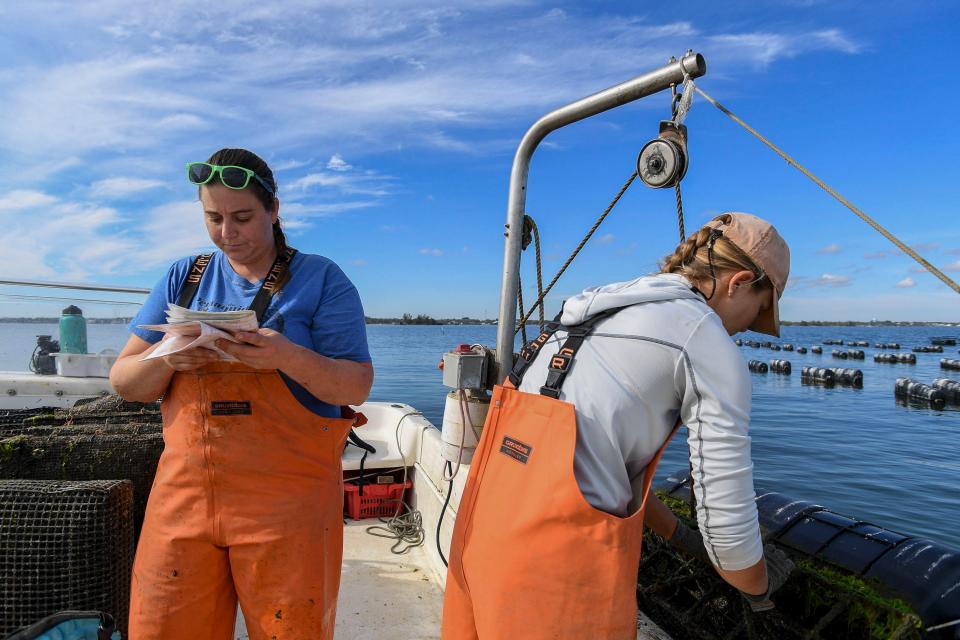
In 2013 she landed an aquaculture job in Barnstable, Cape Cod, Massachusetts, and in the years to follow, learned the ropes throughout the east coast and Gulf Coast by working in hatcheries, nurseries and processing facilities. She produced marketing and social media content and logistics, prepping her for her farm in Indian River County.
How aquaculture farming is done
Mariano and her team are out at sunrise year-round, traveling about 10 minutes by boat to the on-the-water farm south of the Sebastian Inlet.
They use floating gear, consisting of square cages filled with four bags of growing oysters. The bags allow the oysters to filter water.
They're harvesting Sebastian Silvers, Gold Doubloons and Treasure Coast oysters, named with the historical significance of the 1715 fleet and described as salty, briny and packed with flavor − to fulfill orders that ship across the country.
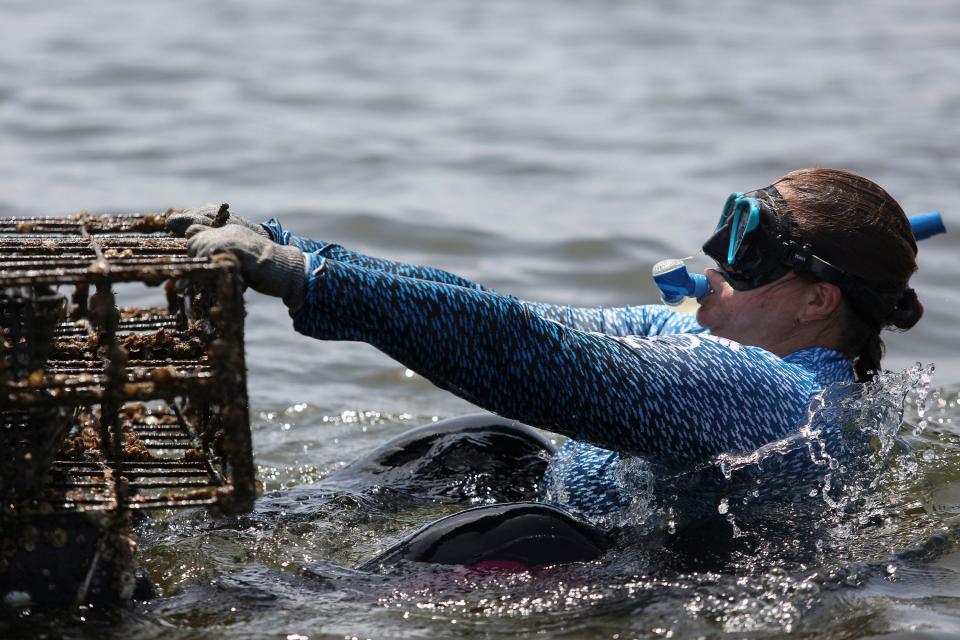
On any given day, you can hear the team clacking and counting oysters — sometimes in sync — from the historic Sembler dock in Sebastian. They're ensuring the eastern oysters are free of barnacles and are alive before they pack them up for market or fulfill wholesale orders.
Some shellfish consumers have followed the practice of only eating oysters during the months of September through April, to avoid bacteria that naturally occurs in the warm water where oysters live and can cause illness.
"With technology and advancements, and different types of testing, we can eat oysters during the summer and we can eat them year round. Our inspector randomly comes in and always does spot checks,” Mariano said.
Guidelines for harvesting oysters are implemented by the Florida Department of Agriculture and Consumer Services.
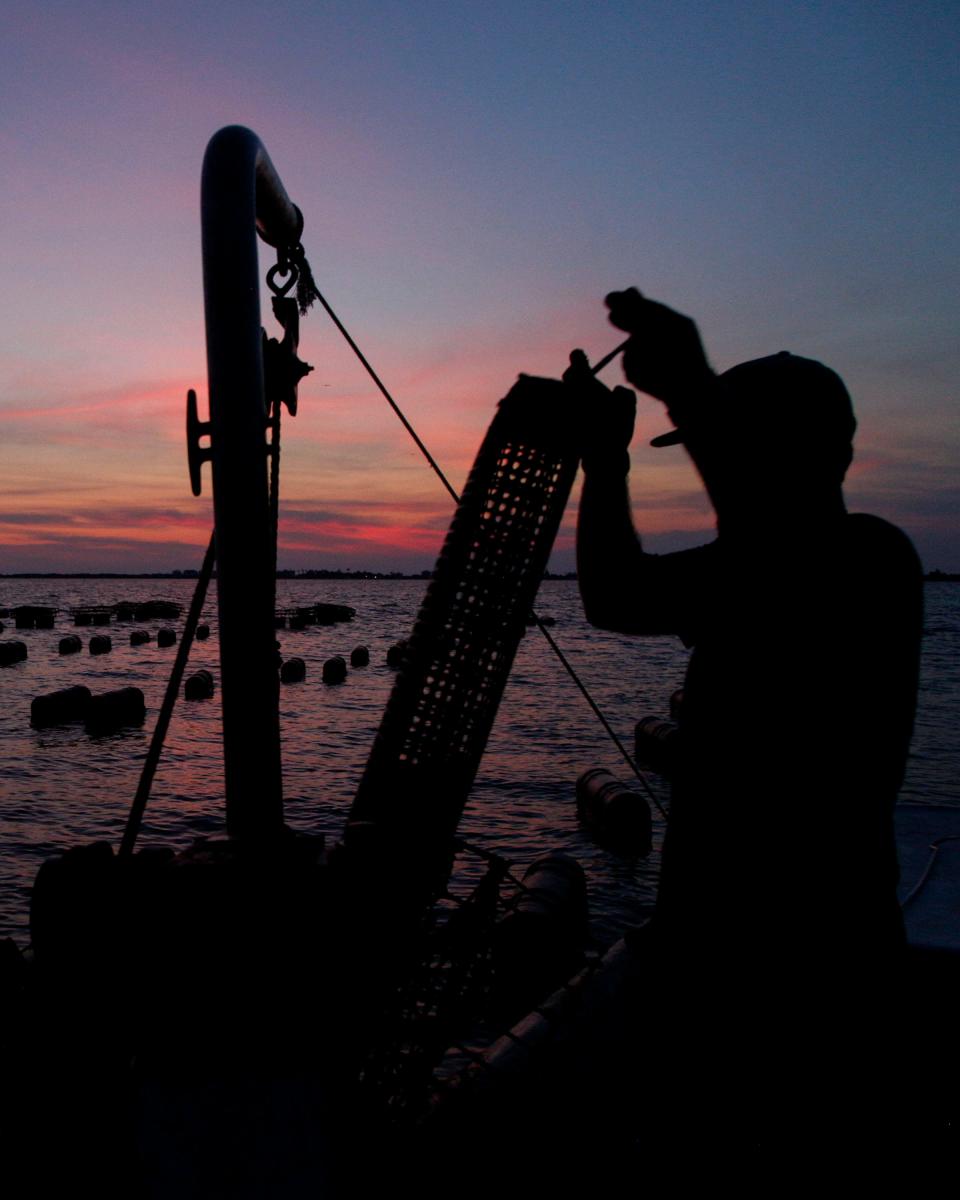
From November to March, the crew has from sunrise until 5 p.m. to harvest, bag, tag and make sure the oysters are cooled using “rapid cooling” to 55 degrees Fahrenheit and below. The rest of the year, they have from sunrise to 11 a.m. to meet those standards.
Once the oysters are ready to be bagged, they all are tagged with details including the harvest location, date, processor's name and address.
“Restaurants have to keep those for 90 days after the last oyster is sold,” Mariano said. “Ask for the tag, if you are going to a restaurant, and (want to) know where the oyster is from.”
Increasing biodiversity and beyond
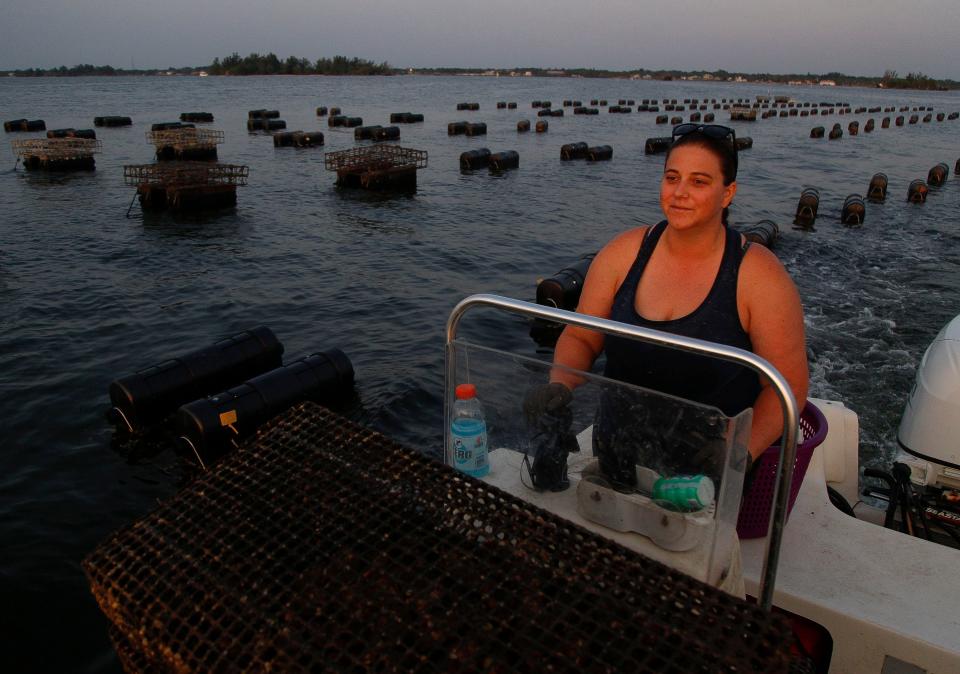
Mariano said she's working toward saving the aquaculture industry, from a consumer standpoint, and also is contributing to the spawning and nursery ground for various fish and crustaceans in the Indian River Lagoon.
Oysters feed by filtering algae in the water through their gills.
“One adult oyster can filter up to 50 gallons of water a day,” Mariano said. “Last year we planted just under a million oysters. That’s a lot of water.”
She said there are "amazing organisms that are living, thriving and reproducing in this area."
Seahorses, scallops, stone crabs, female blue crabs, to name a few.
“There really isn’t seagrass anymore,” Mariano said. “So, they aren’t inside the bags, but they’re in between the gaps in the cages."
They’re using that structure to hide in, spawn and let their eggs out, she said.
She said she's never seen so many seahorses until 1 ½ years ago.
"I didn’t even know there were live scallops on the east coast of Florida,” she said.
Still, she said, she's worried about the industry.
"There is a need for affordable seed for the Gulf Coast," she explained, due to supply and demand. "The price differences are significantly higher than on the east coast. It's pushing out some of the smaller farmers."
Also, there's a lack of hatcheries on the east coast that produce oyster seed. That, along with hurricanes, summer mortality rates from North Carolina to Florida and over to the Panhandle, and what she calls the "war against barnacles," has her hoping she can replenish the keystone species of oysters in the Indian River Lagoon.
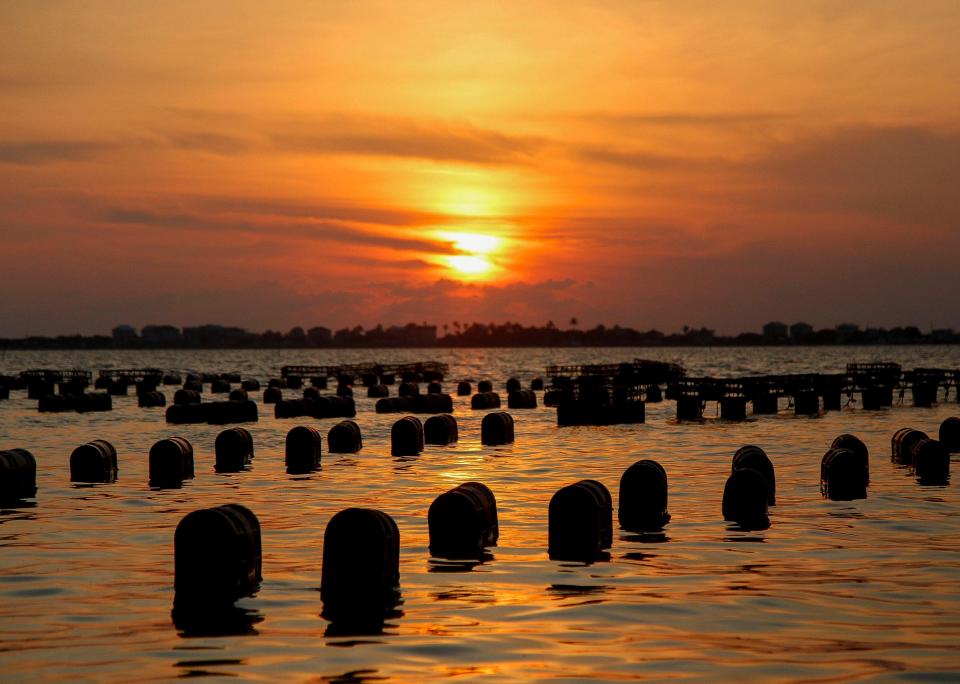
There really needs to be funding for genetic research, she said.
“We do have diploid oysters to give back to the environment when they spawn,” she said.
Diploid oysters have two sets of chromosomes, one from each parent.
“I’ve been fortunate enough to work with a hatchery in Virginia, to provide them with broodstock from our local growing area,” she said.
Through using local oysters from the natural environment, Mariano exports parent oysters from her farm, through out-of state and in-state permitting, then imports the offspring back home.
“I always wanted to have a local genetic line of oysters to our growing area in the Indian River Lagoon,” she said.
How you can order oysters
Oysters can be ordered by emailing oysternicolette@gmail.com or you can purchase them through the Original Indian River Seafood Market, 633 Old Dixie Highway, Sebastian.
This article originally appeared on Treasure Coast Newspapers: Treasure Coast's only oyster farm helping to restore Indian River Lagoon biodiversity

